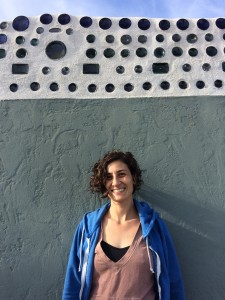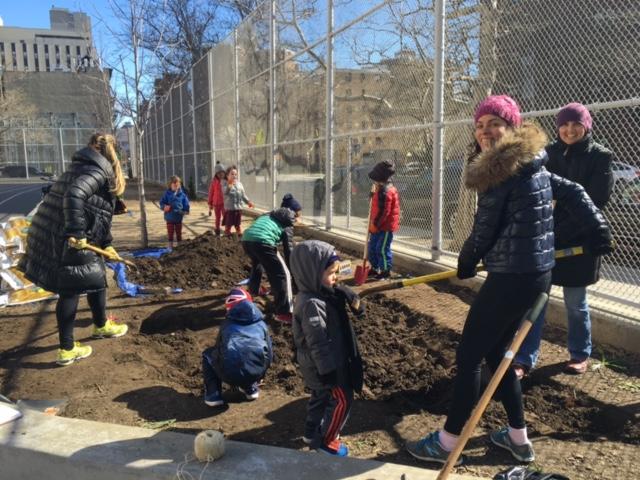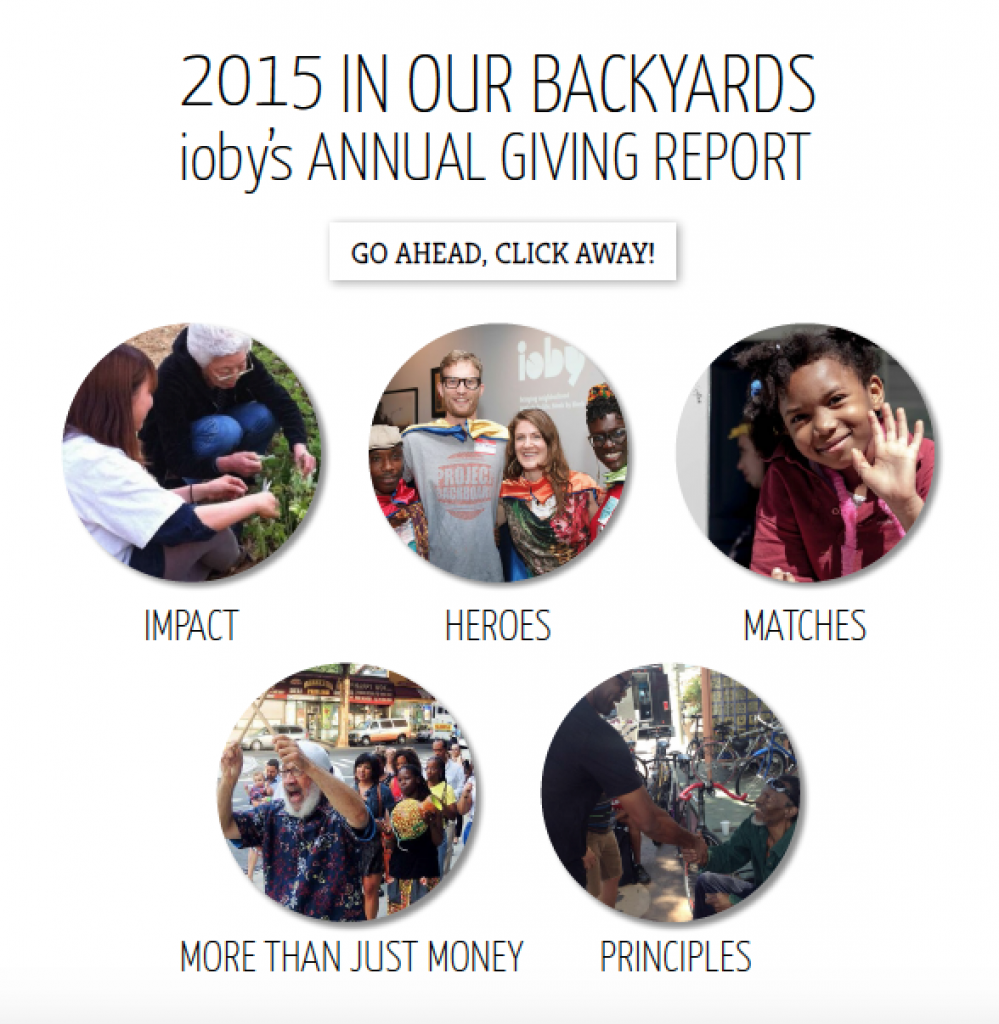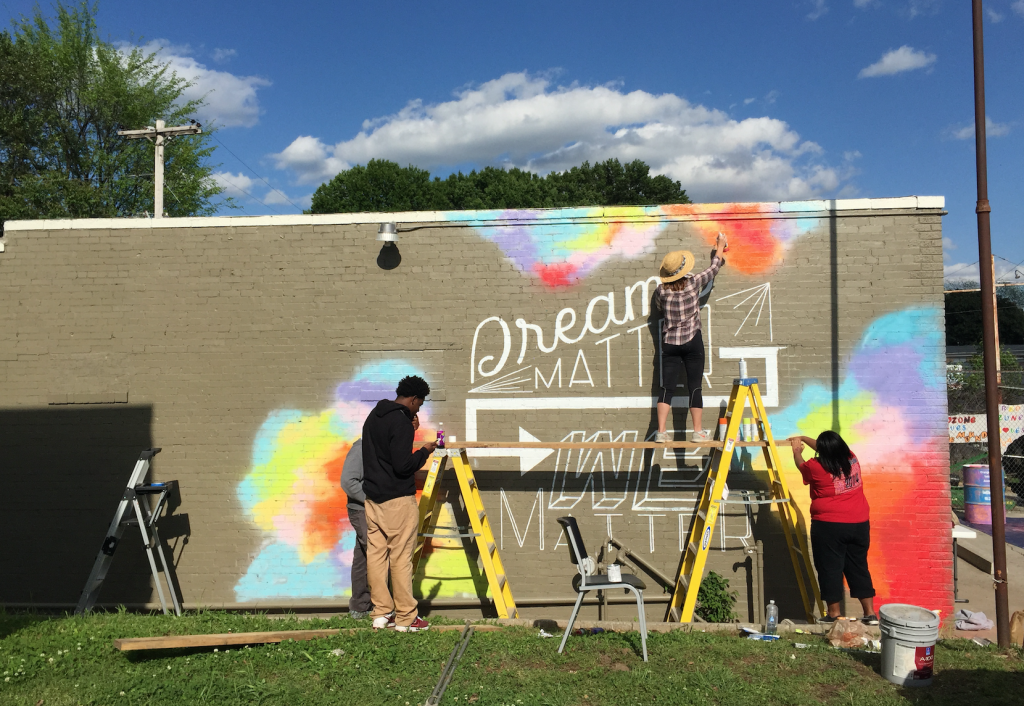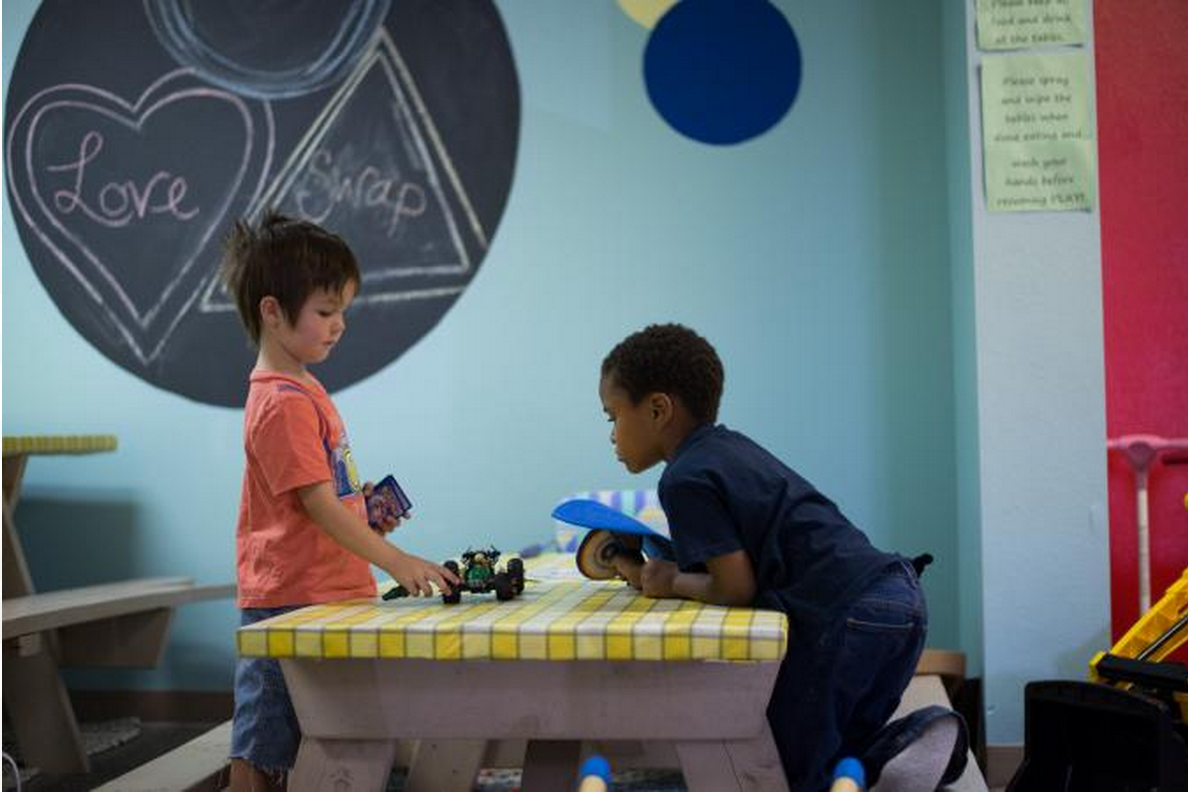Want to start your own project but need some inspiration? Our Learn from a Leader blog series is profiling past ioby Leaders who succeeded in bringing more fresh food, active transport, green spaces, and other healthy improvements to their neighborhoods. Read on, and imagine what you could do on your block!
About the project:
San Diegoan Avital Aboody rallied her neighbors to turn an underutilized parcel of land in a commercial district into a bright and beautiful community space for play, leisure, and gardening. The idea behind the H.A.C.E.R. Project Gilliam Family Community Gathering Place was to “touch on a lot of needs and desires we heard from the community,” Avital says.
She organized members of the Logan Heights neighborhood to design and build a vibrant, safe, and functional space where kids could play, people could enjoy lunch from local eateries, neighbors could watch outdoor performances on a small amphitheater and movies on a small screen, and everyone could learn about plants from a teaching garden. Sound good to you? Us, too! Read on to see how Avital made it all happen.
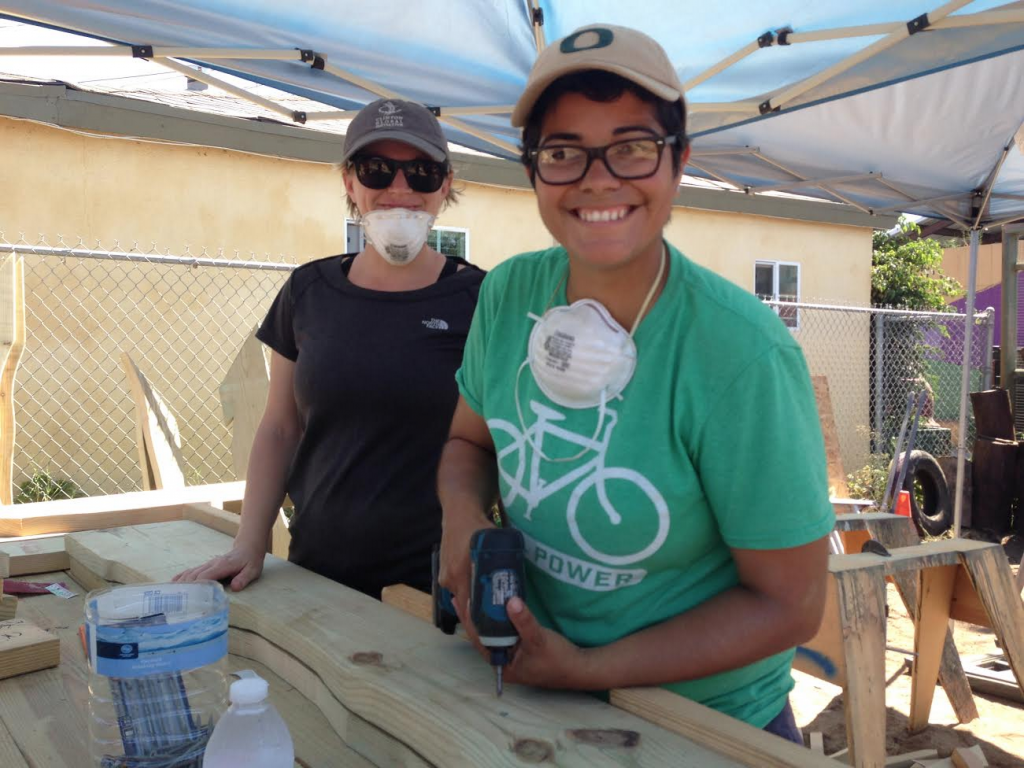
The steps:
- Secure your space—and permission. If you have an underutilized site in mind for your community space, first make sure it’s in a highly-visible location. (Hidden lots in low-traffic areas aren’t the best candidates, since you want people to have easy access.) It’s also important that you pick a place where you’ve already established relationships: maybe you’ve led a trash pick-up or organized an event there in the past. You want to build trust with your community before asking for their support. Once you’ve checked those boxes, try to find out who owns the land. This can take some time, as you might have to sift through a lot of records, make a lot of phone calls, write a lot of letters, etc. Once you have a handle on it, reach out to the owner, explain your idea, and ask for permission to use their land for this community benefit. If they say yes, you’ll want to draft at least a simple lease (starting from a template is fine), and have an entity like your neighborhood association or a local nonprofit sign it as the space’s representative.
- Tell people—and ask them. Get as many kinds of supporters together as you can: organize community meetings and pass out flyers to advertise them; send emails to local organizations informing them of your idea; contact teachers and ask if they want to give their students credit for volunteering… And ask everyone what they’d like to see in the space, as well as what skills they might be able to share, what materials they might be willing to donate, what days they could come volunteer, etc. (We met our key design and architecture partner, Space 4 Art, through this process!) We knew whatever we built needed to reflect what the people in our neighborhood wanted, so I kept a running list of everything they shouted out. Space 4 Art took those ideas and helped us narrow them down to what was most feasible, economical, and practical. You’ll also want to put together a dedicated group of organizers who will be with you from start to finish. In our case, that was the H.A.C.E.R. Project (Helping Achieve Community Empowerment and Revitalization) steering committee.
- Then, show people. As we were holding meetings and gathering ideas, we also started organizing volunteer cleanups of the site’s weeds and trash, and put on a trial movie night with a $1 cover charge and food for sale by local vendors. These efforts made people aware that we were serious about our plans, already “plugged into” the space, and making progress toward our goals. We also set up a Facebook page and website to help keep people engaged as our plans (slowly) came together.
- Divide and conquer (your budget). We raised about $65,000 total, through many different means, large and small. I pursued avenues like grants, reaching out to the city council and funders I already knew from my job, and funding competitions I found online. Meanwhile, the steering committee put together a list of the materials and supplies we needed and sent it around to their contacts; we got some good in-kind donations from that. The committee also came up with fun money-making ideas like placing “tip” jars—decorated by students—in local stores, which I collected once a week. All those quarters and dollar bills eventually added up to probably $1,000!
- If you build it, they will come. Everything we did culminated in a highly-publicized “build week” where we tried to get the whole thing constructed in one week by hundreds of volunteers. To prepare, we identified the people with the best building skills and made them “captains” who could show up consistently and teach others. (When people don’t know how to do the tasks on offer, you get the problem of “idle hands.”) While in the end, the scope of the build was bigger than I imagined and took longer than a week to finish (more like a couple of months!), we did eventually get all the talent and elbow grease we needed to get it done. Then we celebrated with a gathering in our new space!
Time/timing:
Happily, there aren’t many seasonal issues to work around in San Diego (no snow, for example!). But we did want to get lots of student participation, and that’s easier to accomplish during the school year than in the summer, so originally we planned to build in June, then wound up pushing it to September.
It took about two years from the time I secured permission with the landowner to the time we were done with the build. One year might be enough for a less design-heavy project, but I wouldn’t budget any less than that since fundraising always takes time—grant cycles in particular.
Budget:
Once we had our design plans solidified, we drew up a detailed budget. Remember to include a line item for ongoing maintenance costs. You don’t want to build out a space and then not be able to keep it clean, beautiful, and safe!
When sending it to potential funders, we always made sure to illustrate how much of our budget we were already meeting with in-kind donations. This showed them we were being proactive and making use of every type of contribution we could.
Parting thoughts:
We met lots of people who don’t live near the space but who love to come out and support projects like this. That’s great, but it can become a sticky situation when residents see “outsiders” come in to help. Key to our success was engaging the people who live near the space in actually doing a lot of the work. We tried hard to make them feel it was really theirs: while our nonprofit partner was technically the leaseholder, we encouraged the community to organize their own programming; we made sure the gates were always unlocked during open hours; and we had our steering committee (which included some residents) take the lead on maintenance issues, instead of the nonprofit. You want your residents, more than anyone else, to be in charge. If they’re not involved, the space might go unused and become just another artifact of gentrification.
Additional resources:
– Our website: A good snapshot of the project.
– San Diego Foundation: We got a $30K-ish grant from them. Your community might be home to a similar funder.
About the author:
Avital Aboody is an organizer, social justice advocate, and grassroots community planner who has facilitated several participatory projects that create beautiful public spaces and build community wealth in historically looted neighborhoods.
Feeling inspired? Want to take action in YOUR neighborhood? If you have awesome ideas about how to make your town greener, safer, and more fun, let us help! Tell us your awesome idea right here. We’d love to help you get started today.
